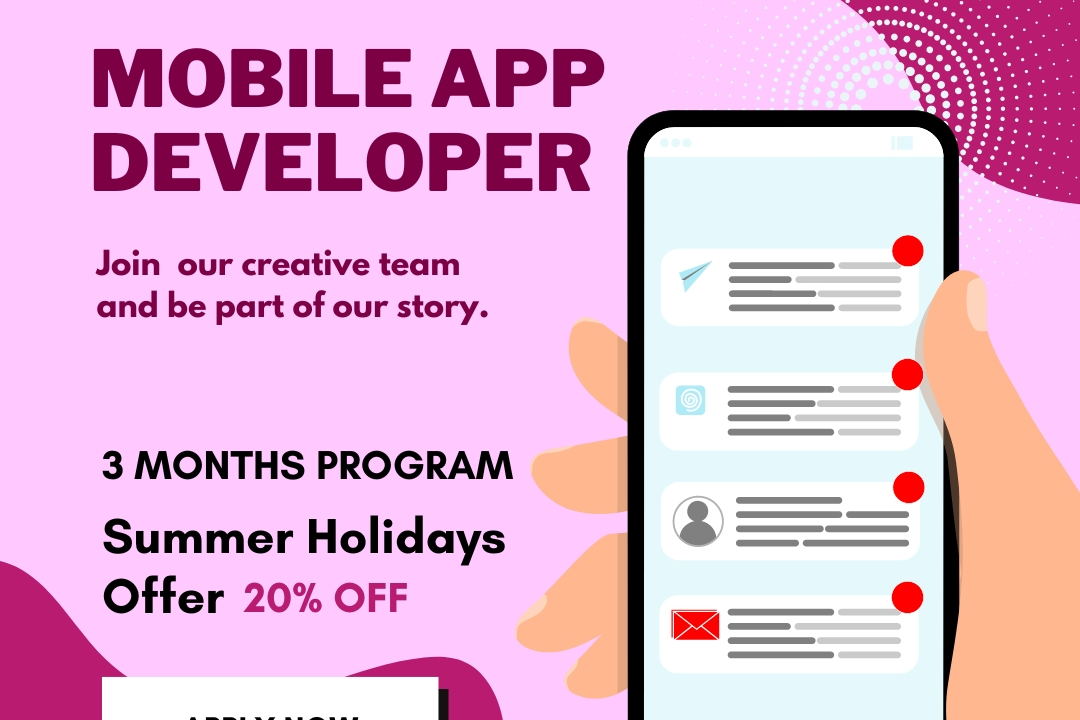Flutter Application Compatibility
Enhancing Compatibility for Flutter Applications
Flutter Application Compatibility
Flutter is designed to provide cross-platform compatibility, enabling developers to build applications that run on multiple platforms using a single codebase. It supports a wide range of operating systems, including iOS, Android, web browsers, macOS, Windows, and Linux. This is achieved through Flutter's rich set of pre-built widgets and a rendering engine that ensures a consistent look and feel across devices. Additionally, Flutter's framework allows for seamless integration with platform-specific features and native code, enhancing performance and user experience. As a result, developers can create high-quality, natively compiled applications that maintain a uniform appearance and functionality across various platforms, significantly reducing development time and effort.
To Download Our Brochure: https://www.justacademy.co/download-brochure-for-free
Message us for more information: +91 9987184296
1 - Cross Platform Capability:
Flutter allows developers to build applications for multiple platforms including iOS, Android, web, and desktop from a single codebase, enhancing efficiency and reducing development time.
2) Web Compatibility:
Flutter's web support enables applications to run in modern web browsers, transforming existing mobile applications into full fledged web apps with minimal changes.
3) Responsive Design:
Flutter makes it easy to create responsive UIs that adapt to different screen sizes and orientations, ensuring a consistent user experience across devices.
4) Native Performance:
Flutter compiles to native ARM code for both iOS and Android, offering high performance and smooth animations that feel native to the platform.
5) Dart Language:
Flutter uses Dart as its primary programming language, which is compiled to native code and provides great performance; understanding Dart is essential for Flutter developers.
6) Operating System Compatibility:
Flutter supports both major mobile operating systems (iOS and Android), allowing developers to target a large audience without creating separate apps.
7) Access to Native Features:
Flutter provides plugins that allow access to native device features (like GPS, camera, microphone) enabling seamless integration with the platform’s capabilities.
8) Hot Reload:
The hot reload feature allows developers to instantly see the effects of changes made to the application code, greatly speeding up development and debugging processes.
9) Consistent UI Across Platforms:
Flutter’s extensive widget library and the Material and Cupertino design systems allow for consistent UI across different platforms, giving users a familiar experience.
10) Third party Library Support:
Flutter has a rich ecosystem of third party libraries and plugins that can enhance functionality and help ensure compatibility with various services and APIs.
11) Internationalization and Localization:
Flutter makes it easy to support multiple languages and cultures, which is essential for reaching global audiences effectively.
12) Testing Across Platforms:
Flutter provides built in testing features including widget testing and integration testing which help maintain app performance and compatibility across devices.
13) Version Control:
Keeping up with the latest Flutter SDK updates ensures that applications remain compatible with the latest features and fixes provided by the platform.
14) Community Support:
The large and active Flutter community provides extensive resources, plugins, and guidance, making it easier for developers to troubleshoot compatibility issues.
15) Progressive Web App (PWA) Support:
Flutter enables developers to create progressive web apps that work offline and leverage modern web capabilities, enhancing compatibility with web standards.
16) Maintaining Backward Compatibility:
Flutter’s development philosophy emphasizes maintaining backward compatibility, which helps ensure older apps continue to work seamlessly after updates.
17) Access to Latest OS Features:
When new iOS or Android features are introduced, Flutter quickly updates to support these features, keeping applications relevant and up to date.
Conclusion
Understanding these points will help students grasp the breadth of Flutter's application compatibility, enabling them to build versatile applications that can run across a variety of devices and platforms while maintaining a user friendly experience. This knowledge is essential in a rapidly evolving tech landscape.
Browse our course links : https://www.justacademy.co/all-courses
To Join our FREE DEMO Session: Click Here
Contact Us for more info:
Java for intelligent systems
FLUTTER TRAINING IN VALPARAI
Java for regulatory compliance
iOS Training in Mira Bhayandar
pmp training chennai











